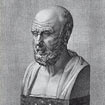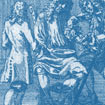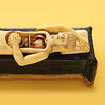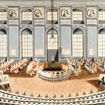
The Old School of Medicine
Very little was known about the human body in the 18th century. Although William Harvey (1578 – 1657) had correctly described the circulation of the blood, metabolism, bacteria and hormones were not yet known.
Based on the doctrine of the four humours, illness was seen as a sign that blood, phlegm and black and yellow bile were no longer in balance. One sought to re-establish the balance by employing blood-letting, laxatives and emetics.
Medical treatment was mostly based on theoretical models. Often drug mixtures were prescribed and high doses of poisonous substances such as arsenic and mercury. In contrast, Hahnemann’s strongly diluted and exactly measured doses made homoeopathy look much more attractive.

From antiquity up to modern times, medical treatment was based on the four-humour-theory. The doctrine which was also known as humoral pathology goes back to the Greek physician Hippocrates (c. 460 – 370 BC). He defined disease as an imbalance of the body humours or fluids (blood, phlegm, black and yellow bile) which could also be caused by adverse air, water or earth conditions.
Emptying the body was thus for decades the main ambition. Patients had to undergo debilitating procedures involving bloodletting, enemas and emetics.
The cellular pathology of Rudolf Virchow (1821 – 1902), which reduced the development of disease to intracellular changes, replaced the four-humour-theory in the end.

In the 18th century health care was not provided by the same professional groups as today. Only a small minority of practitioners had studied medicine, the majority were barbers and surgeons. The barbers used mostly bleeding and cupping while the surgeons carried out surgery and also amputations. Both professions were seen as trades which one learned from a master.
Many lay healers also knew about the healing power of plants and other substances and applied their medical knowledge at all levels of society.
Up to the 18th century miracle healers, teeth-pullers and sellers of spectacles offered their wares and services on markets and fairs.

For centuries the universities taught all medical knowledge from books. Anatomical studies were carried out on dummies, fold-outs or wax models. Dissections of corpses were very rare. Knowledge of the human body was quite limited and bedside teaching only happened in exceptional cases.

In the 18th century a reformation of the medical training set in at some universities. Theoretical knowledge was to be verified and complemented by practical bedside teaching. One of the reformers was Joseph von Quarin (1733 – 1814), Samuel Hahnemann’s teacher in Vienna. Hahnemann said later about his studies in Vienna that it was due to Quarin that he had become the physician he was.


